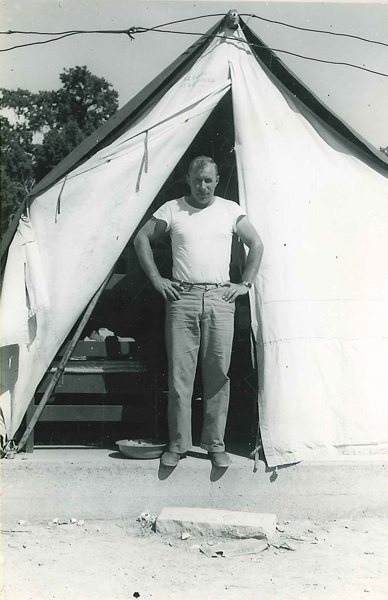 the
Appalachian region. Dana Wells, paleontologist, suggested that I apply to
U.C.to study sedimentology under Dr. Rittenhouse.
the
Appalachian region. Dana Wells, paleontologist, suggested that I apply to
U.C.to study sedimentology under Dr. Rittenhouse.
Wayne D. Martin (PhD '55)
I
came to U.C. in the fall of 1949 to major in sedimentology. Gordon Rittenhouse
had recently spent part of a summer at West Virginia University to obtain data
from W. V. Geological Survey records on the Mississippian System of the
Appalachian region. Dana Wells, paleontologist, suggested that I apply to
U.C.to study sedimentology under Dr. Rittenhouse.
the
Appalachian region. Dana Wells, paleontologist, suggested that I apply to
U.C.to study sedimentology under Dr. Rittenhouse.
Kenneth Caster helped me in the planning
of my course program for the first year. When he suggested that I enroll in his
year course sequence in paleontology I informed him that I had already taken a
course in paleontology. His reply was: "you have not had my course".
I have never regretted taking this two-semester course, or his year course
sequence in advanced stratigraphy. In stratigraphy, students were assigned
topics for class presentation. Although I dreaded the first time I gave a
presentation, I found each one, especially the preparation, a rewarding
experience.
Gordon Rittenhouse taught two courses,
Basic Sedimentation for undergraduates and Advanced Sedimentation for graduate
students. The advanced offering was a two-semester sequence and the text was F.
J. Pettijohn's Sedimentary Rocks, second edition. The text was the first
assignment, all of it. A selected reference list of papers was provided. The class
periods were mainly discussion sessions, not lecture sessions. The laboratory
work was mainly the study of rock thin sections. A term paper was assigned on
sedimentary environments.
Gordon Frey placed emphasis on petroleum
geology in his course in Economic Geology. He assigned a pace and compass
traverse to be conducted in Mt. Airy Forest as a practical problem in the
course.
I was a laboratory assistant, a small
student group instructor in Richard Durrell's excellent course in physical geology.
There were morning and afternoon coffee
breaks at the nearby student union with Dr. Rittenhouse generally present.
Geologic topics more than any other kind were discussed during these
gatherings. At the Friday night congregations of students at a bar, the
professors were commonly the topics of conversation.
I have been very pleased with my
background in soft rock geology at U.C. Although I did not take a course with
John L Rich, I learned much from him. He was an especially astute observer and
interpreter of physical and biogenic structures in sedimentary rocks and in
sediments. His knowledge and interests ranged widely, from the nature of the
crust of the Earth to striations preserved in rock by a brachiopod shell
settling from suspension to rest on a muddy sea bottom. He was an excellent
subsurface geologist capably utilizing subsurface data in the preparation of
maps and the removal of regional dip.